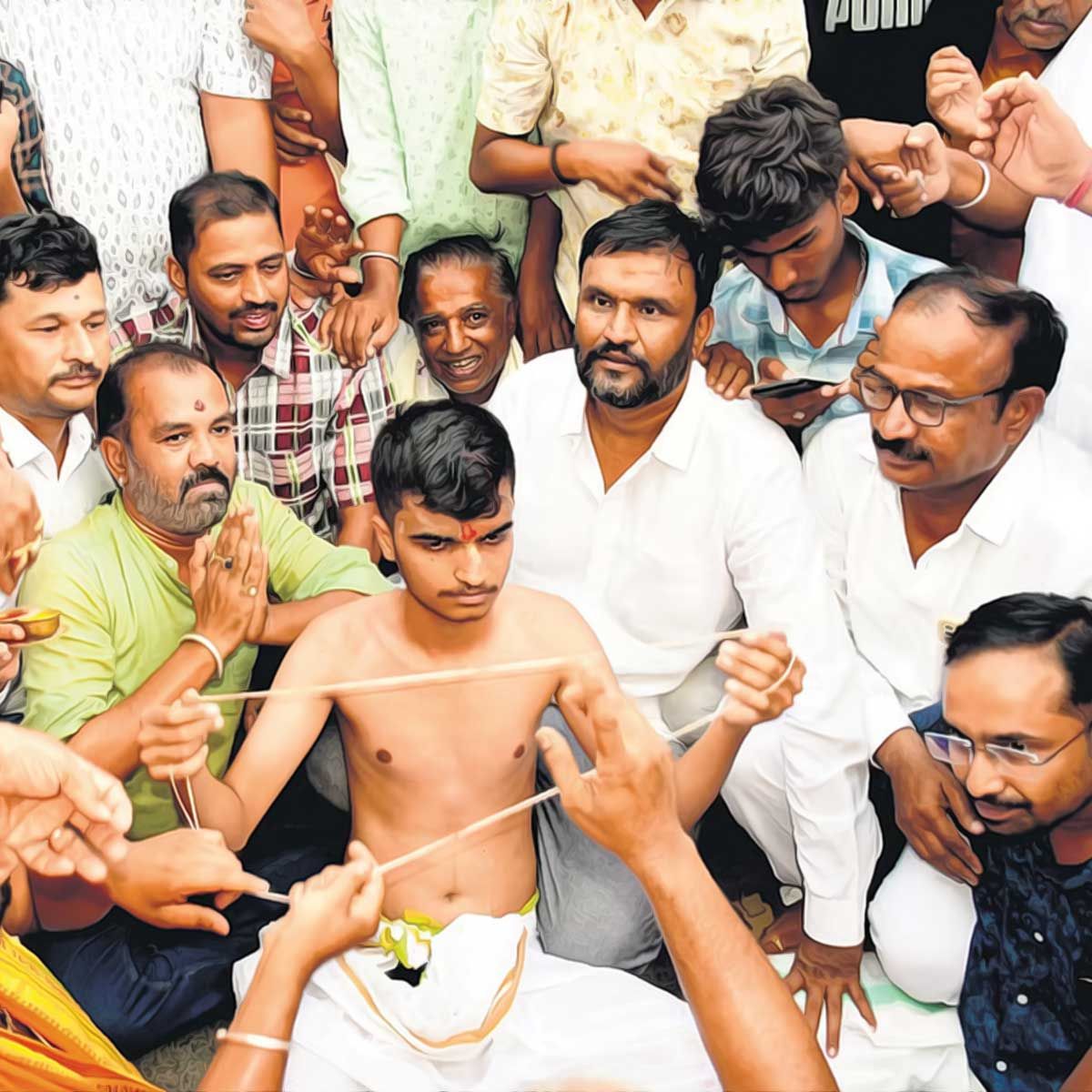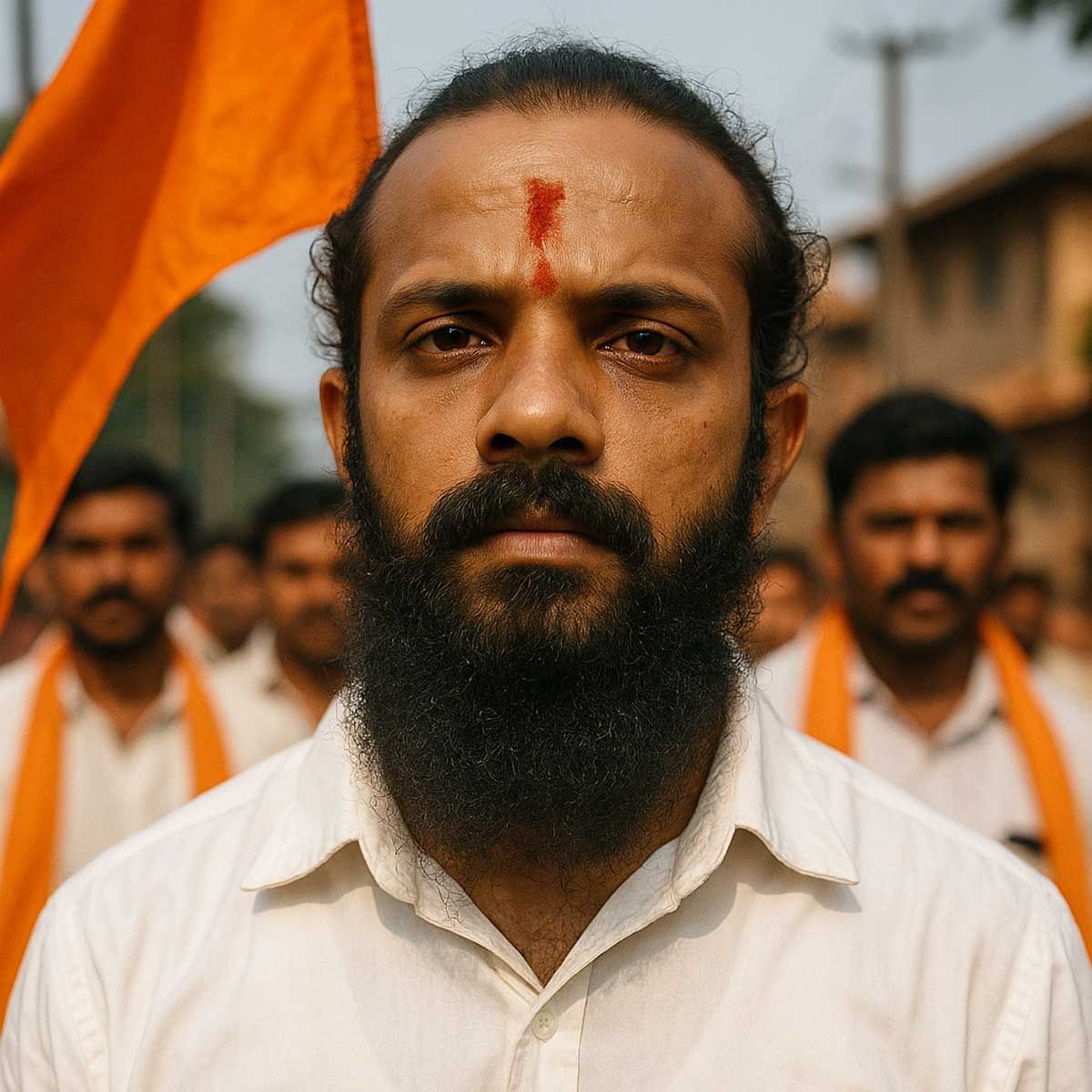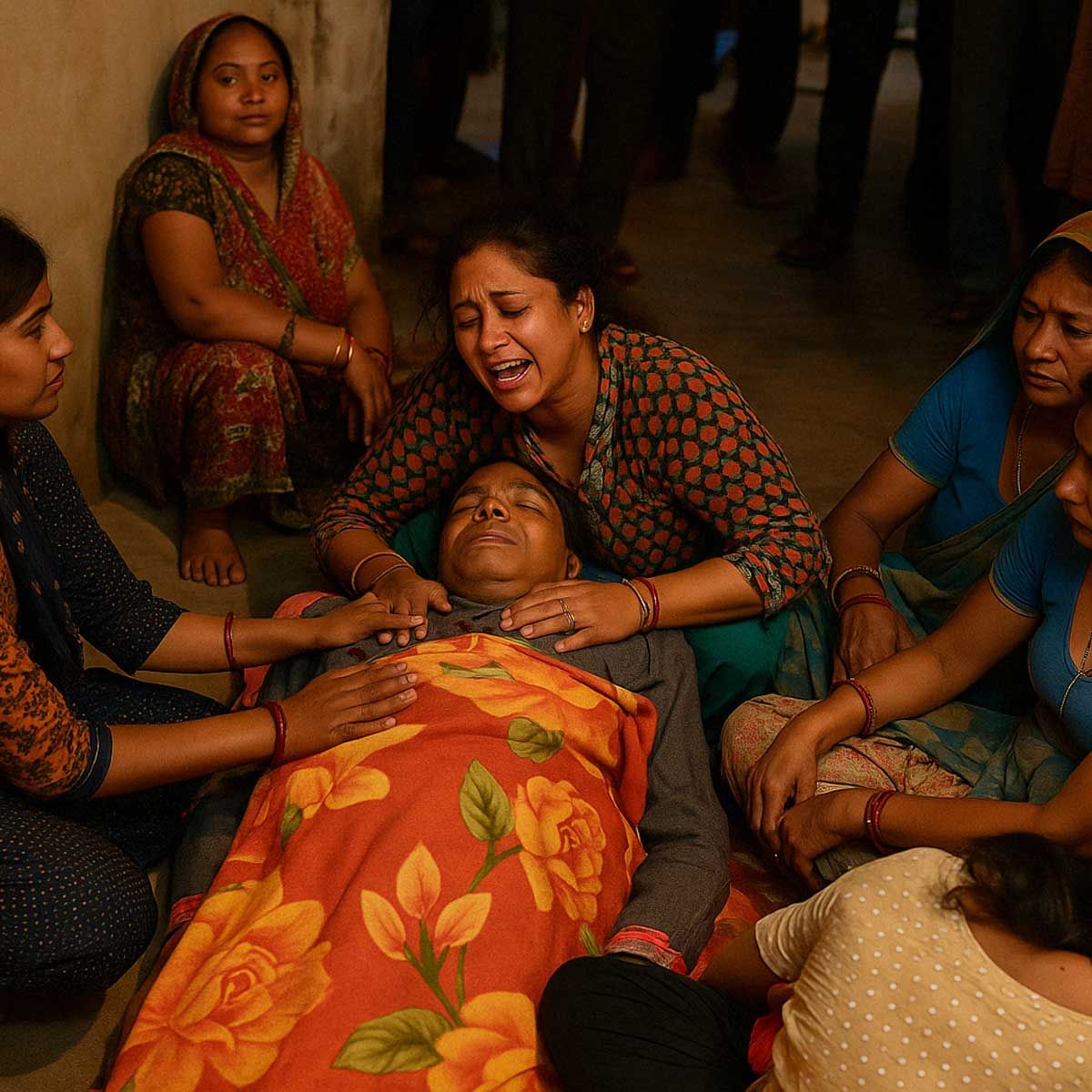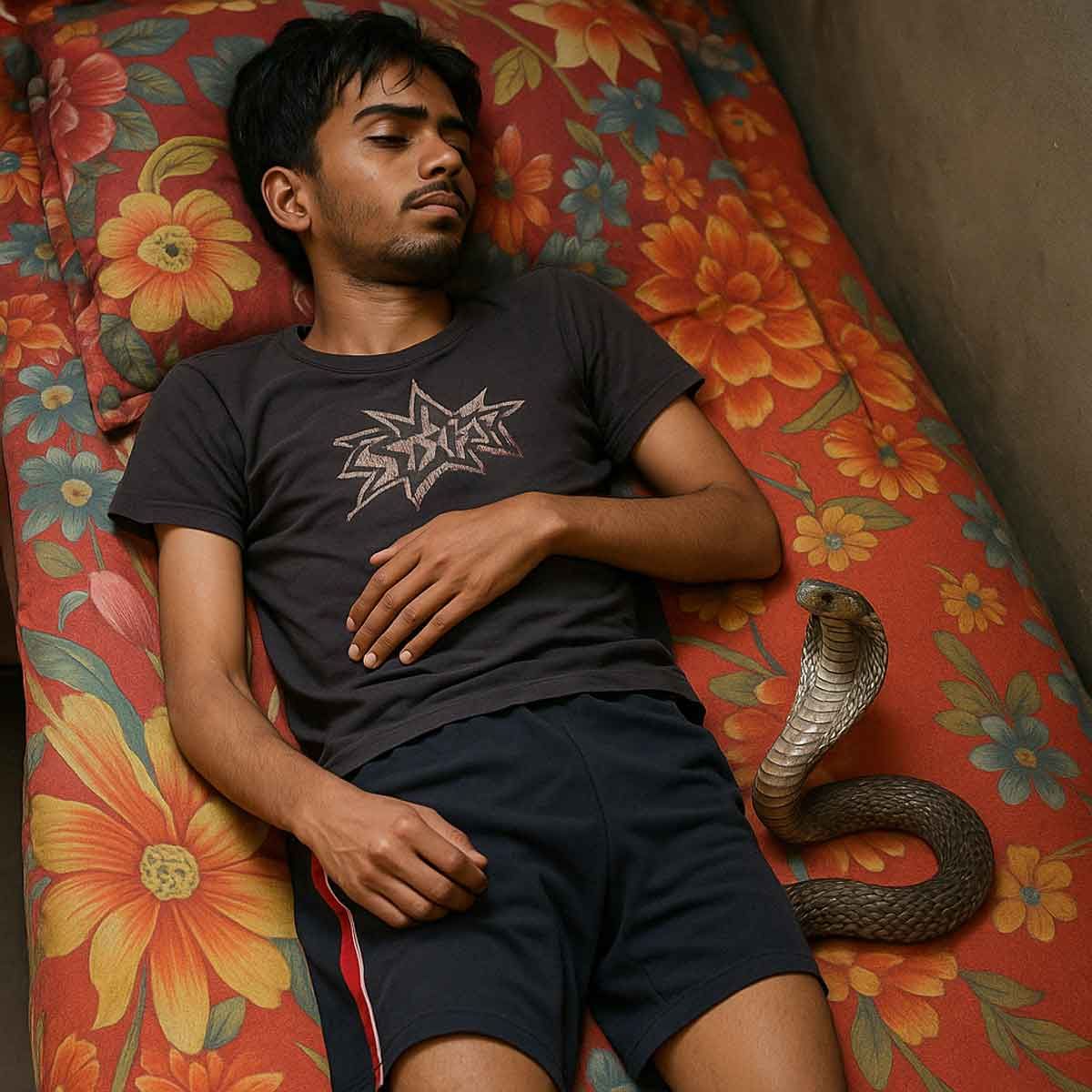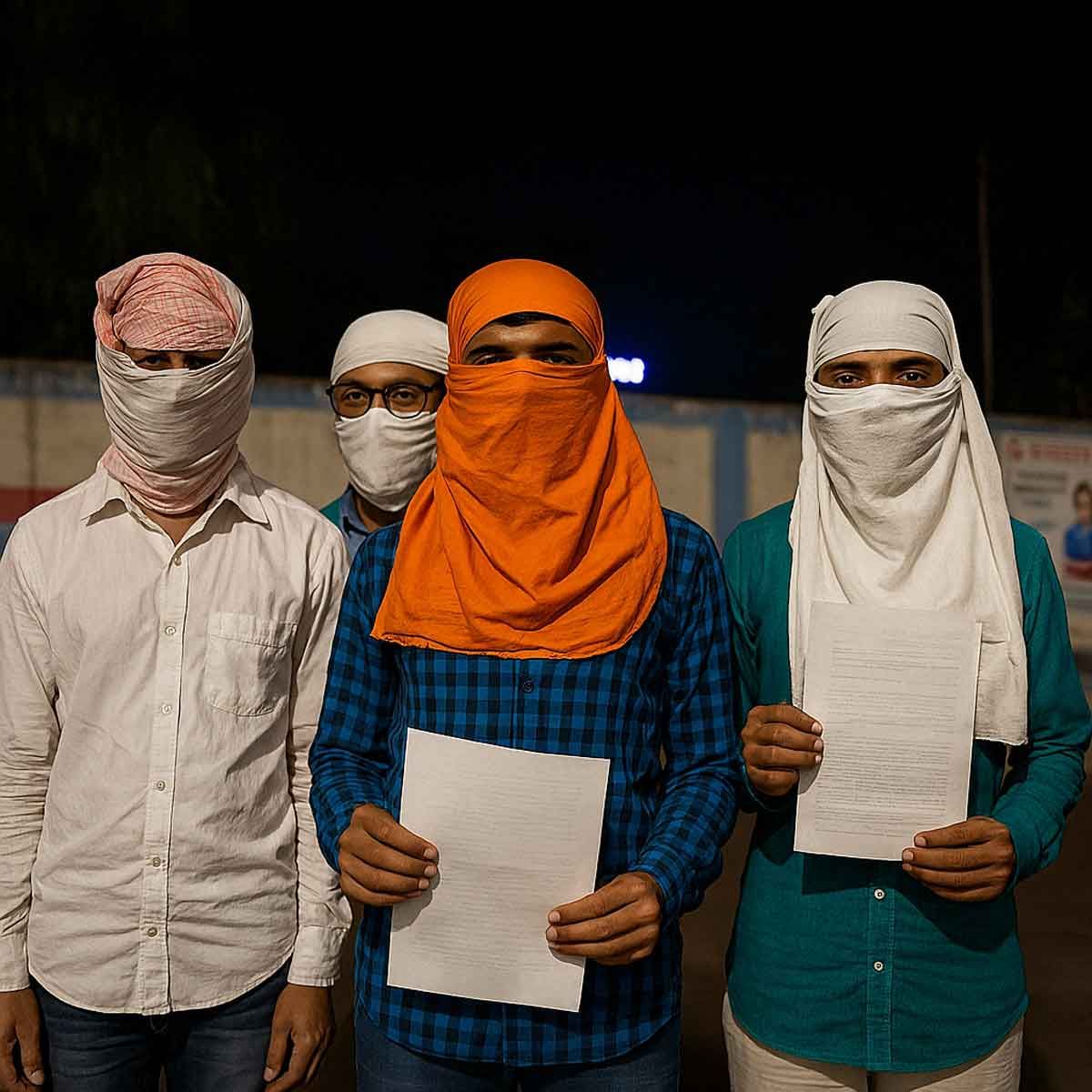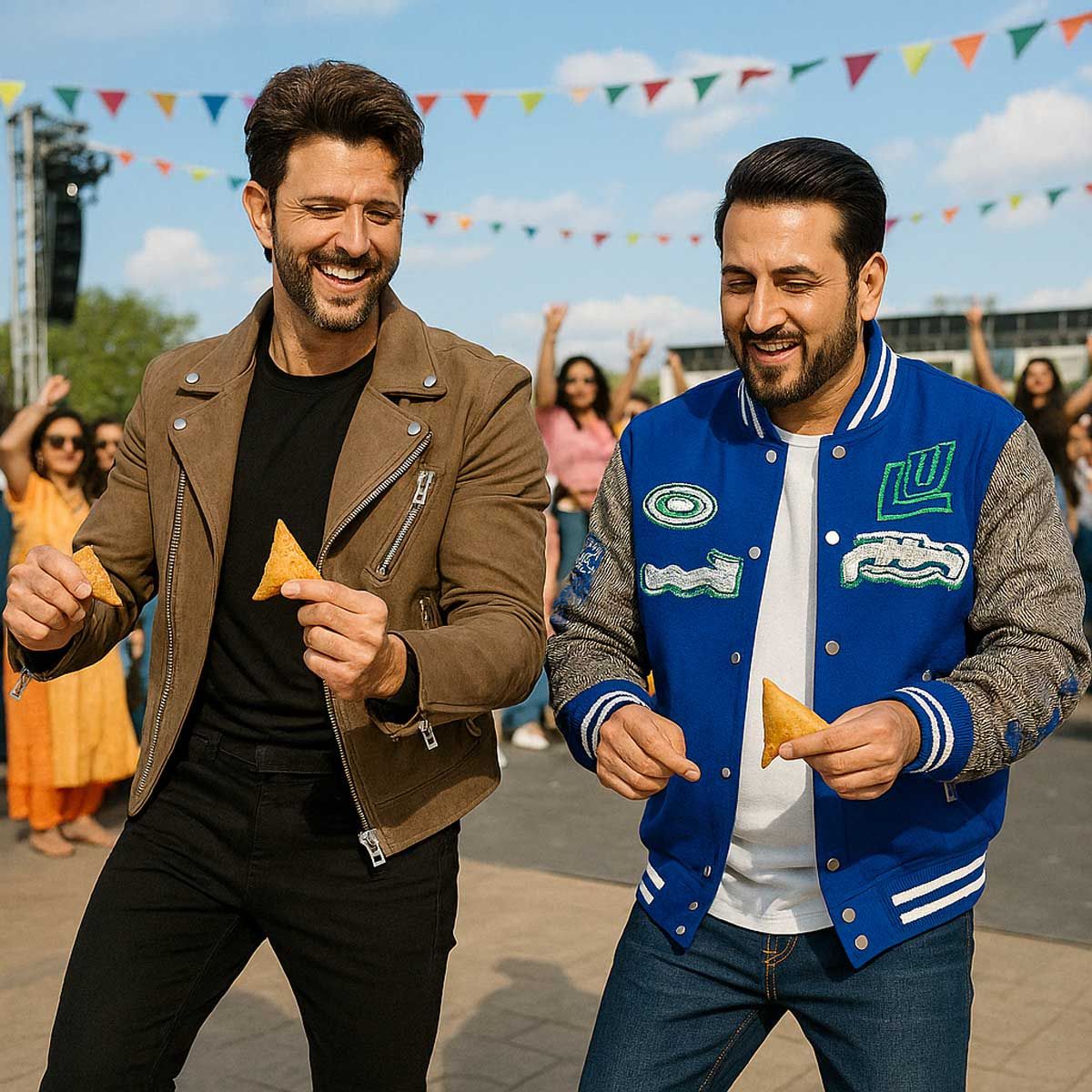More Coverage
Twitter Coverage
Satyaagrah
Written on
Satyaagrah
Written on
Satyaagrah
Written on
Satyaagrah
Written on
Satyaagrah
Written on
JOIN SATYAAGRAH SOCIAL MEDIA
"A lie with a purpose": At the 45th Prix Européen de l’Essai, controversial author Arundhati Roy amplifies anti-India rhetoric, distorting facts on Godhra, CAA, Article 370, while unabashedly endorsing BBC, Hindenburg, and OCCRP's divisive narratives

In recent times, Arundhati Roy has fervently expressed her rather controversial viewpoint of the Indian political landscape, which seems to be rooted deeply in her far-left ideologies. She paints her interpretation of India as an unarguable fact, swaying towards a narrative that many might find exaggerated.
On the past Tuesday, September 12, the outspoken author Arundhati Roy didn't hold back during her speech at the 45th Prix Européen de l'Essai, a prestigious event that took place in the scenic Lausanne city of Switzerland. Recognized with a Lifetime Achievement award at the event, Roy utilized the platform to vocalize her alarming concerns about India's current democratic state. She fervently stated that her literary works trace India's supposed journey from a state of majoritarianism to what she considers to be an outright fascist rule.
Taking a dig at the BJP, Roy made sweeping accusations of the party fostering a climate of 'Hindu supremacy'. In a direct quote, she voiced, “Elections are a season of murder, lynching and dog-whistling – the most dangerous time for India’s minorities, Muslims and Christians in particular.”
Furthermore, Roy ventured to portray her version of India, a projection deeply influenced by her left-leaning political stance, as an absolute truth. She went on to argue that a form of 'evil' has seamlessly integrated into daily life in India, notably in the public spheres such as streets and classrooms.
Not stopping at that, the critically acclaimed yet controversial writer lambasted the media for allegedly encouraging 'fascist majoritarianism'. Moreover, she criticized Modi's government, accusing them of undermining the fundamental principles of the Indian Constitution. In her audacious forecast, she asserted, "If the current regime wins a majority in 2024, it is very likely that we will see a new Constitution," showing no signs of backing down from her fiery stance.
Expanding on her alarming narrative, Roy persisted with her bold claims. She professed, “Even in the unlikely event of an electoral defeat, the supremacist poison runs deep and has compromised every public institution that is meant to oversee checks and balances.” Furthermore, she didn't shy away from scrutinizing the Indian Supreme Court's credibility, labelling it as 'weak' and 'compromised'.
In a new turn, Roy seemed to attempt to stir conflict between the North's 'Hindi-speaking states' and the Southern states, making unverified claims about the government engaging in 'delimitation' with the intention to grant more parliamentary seats to the former.
With foreboding words, she stated, “This will cause great resentment in the southern states and has the potential to balkanise India,” insinuating the possibility of secessionism, which entails a breakdown and eventual separation of the Southern region from the Union of India.
However, it's crucial to underline that back in 2002, the government led by Atal Bihari Vajpayee put into effect the 84th Amendment Act, which halted delimitation until the year 2026. This action was initiated to foster population stabilization, aligning with the family planning initiatives pursued by the states and the central National Population Policy strategy. As a result, despite a surge in population over the last 24 years, the number of electoral constituencies remains unchanged, negating any alterations in the 2024 Lok Sabha elections.
It's pivotal to note that this decision was made far back in 2002, thereby dismissing Roy's implications of it being a recent stratagem by the reigning government to gain an electoral advantage. Roy further exacerbated her argument by making unsound comparisons between 'delimitation' and the undemocratic practice of 'gerrymandering' utilized in the US to manipulate electoral boundaries to favor specific politicians.
Switching gears, Roy expressed grievances about the derogatory labels of 'traitor' and 'anti-national' bestowed upon her. She recounted the times when her cautionary tales about India, which commenced in 1998, were met with mockery and criticism. Despite the backlash, Roy harbors hopes that her charged essays will resonate with and influence future generations.
In a sorrowful recollection, Roy recounted the events of 1998 when the BJP assumed power in India. With stark disapproval, she remarked, “...In 1998 a BJP-led Hindu nationalist government came to power. The first thing it did was to conduct a series of nuclear tests. They were greeted by most people, including writers, artists, and journalists, in a language of virulent, chauvinistic nationalism,” painting a picture of overwhelming nationalist fervor that she observed during that period.
Self-designated as the ‘fairy princess of the literary world’, Roy conveyed the derision she faced for publishing her essay titled ‘The End of Imagination’ in Frontline and Outlook. Being branded as a ‘traitor’ and ‘anti-national’ seemed to have bolstered her resolve. “I received those insults as laurels, no less prestigious than the Booker Prize. It set me off on a long writing journey, about dams, rivers, displacement, caste, mining, civil war – a journey that deepened my understanding and intertwined my fiction and nonfiction in ways that they can no longer be separated,” she stated, showcasing her unyielding spirit in her literary expedition.
|
Despite the accolades, Roy found herself amidst unsolicited counsel urging her to cease her critical narrative against India. But the writer remained unswayed, steadfast in her resolve to continue her chosen path. Allegedly, the majority of these counsel were upper-caste men who advised her on the methodologies and thematic choices of her writings. Undeterred, she pursued her journey with an unapologetic stance, representing a strong, defiant voice in the literary world.
In a tone laden with seemingly unbridled criticism of the BJP government that came to power in 1998, Roy resorted to recalling the fervent nationalism that followed the nuclear tests conducted by the government at that time. Not missing an opportunity to express her disdain, she stated, “...In 1998 a BJP-led Hindu nationalist government came to power. The first thing it did was to conduct a series of nuclear tests. They were greeted by most people, including writers, artists, and journalists, in a language of virulent, chauvinistic nationalism,” lamenting what appears to be a surge in patriotic sentiment which she evidently did not share.
Self-professed ‘fairy princess of the literary world,’ Roy seems to revel in the backlash she received for her essay, 'The End of Imagination,' published in Frontline and Outlook. She bore the labels of ‘traitor’ and ‘anti-national’ as badges of honour, asserting, “I received those insults as laurels, no less prestigious than the Booker Prize. It set me off on a long writing journey, about dams, rivers, displacement, caste, mining, civil war – a journey that deepened my understanding and entwined my fiction and nonfiction in ways that they can no longer be separated,” in what seems like an unrepentant affirmation of her controversial stance.
Despite the distress it causes many proud Indians, Roy appears undeterred in her mission to disseminate what many see as anti-India propaganda. In a display of unyielding defiance, she asserted that she was "sternly lectured (mostly by upper-caste men) about how to write, the subjects I should write about, and the tone I should take,” showcasing a blatant disregard for the opinions and guidance of individuals who perhaps sought to steer her away from the path of incessant criticism and divisive rhetoric.
|
Unmasking Arundhati Roy's Support for the BBC's Controversial Documentary
In her latest venture into the realm of contentious narratives, the controversial writer Arundhati Roy seems to have thrown her support behind a BBC documentary on Prime Minister Narendra Modi. It's distressing to witness how Roy unabashedly endorsed content that appears to shield individuals responsible for the horrific incident involving the Sabarmati Express, in which 59 Hindus tragically lost their lives.
Roy recounted, “The BBC broadcast a two-part documentary called India: The Modi Question…The BBC film implicates Modi in the abetment of mass murder…Episode 1 of the BBC film The Modi Question is about the 2002 anti-Muslim pogrom which raged through the state of Gujarat after Muslims were held responsible for the burning of a railway coach in which 59 Hindu pilgrims were burned alive.” Her recounting of the documentary seemingly tries to build a narrative that accuses Modi of playing a part in the tragic incident, while also hinting at an unjust accusation towards the Muslim community in the Godhra carnage.
However, in the eagerness to propel a narrative that seems to be aligned with her established anti-India stance, Roy appears to dismiss the established facts regarding the Godhra tragedy. It should be duly noted that a special fast-track court on March 1, 2011, held 31 individuals, identified as Islamists, guilty of setting the Sabarmati Express ablaze. In a justice-driven verdict, 11 of them were handed the death penalty, though it was later commuted to life imprisonment in October 2017. Some of the convicted individuals included Abdul Razzak Kurkur, Ismail Suleja, Jabbir Binyamin Behra, Ramzani Binyamin Behra, Mehboob Hassan, Siraj Bala, Irfan Kalandar, Irfan Patadia, Hassan Lalu, Mehboob Chanda, & Salim Zarda who were part of this heinous act.
Further, 20 more individuals were convicted and awarded life sentences, showcasing the gravity of the crime and the robust response from the judiciary. These individuals were directly involved in the heart-wrenching incident that claimed the lives of innocent people, including 29 women and 10 children.
Among the convicted, the other 20 were awarded life sentences. Those criminals included Suleman Ahmad Hussain, Abdul Rehman Abdul Majid Dhantiya, Kasim Abdul Sattar, Irfan Siraj Pado Ghanchi, Anwar Mohmmad Mehda, Siddik, Mehboob Yakub Mitha, Soheb Yusuf Ahmed Kalandar, Saukat, Siddik Mohmmad Mora, Abdul Sattar Ibrahim Gaddi Asla, Abdul Rauf Abdul Majid Isa, Yunus Abdulhaq Samol, Ibrahim Abdul Razak Abdul Sattar Samol, Saukat Yusuf Ismail Mohan, Bilal Abdullah Ismail Badam Ghanchi, Farook, Ayub Abdul Gani Ismail Pataliya, Saukat Abdulah Maulvi Isamail Badam, Md Hanif.
|
Roy's seeming approval of a documentary that allegedly tries to exonerate these convicted individuals and points fingers at Modi is deeply troubling. It raises questions about the objectivity and the motivations that drive the narratives she chooses to promote, disregarding the significant and undeniable evidences in the case. It is indeed a somber day when narratives seem to overshadow the quest for truth and justice, as exemplified in Roy's latest statements.
In her incessant efforts to disparage India and its governance, Arundhati Roy continued her unwarranted tirade, asserting narratives that seek to undermine the significant judicial processes that took place in the aftermath of the tragic 2002 events in Gujarat. Despite the substantial evidence and subsequent convictions that proved the involvement of 31 extremists in the Godhra train carnage, Roy seems to be aligned with the BBC's controversial attempt to downplay the severity and accountability established in this case.
Roy recounted, “Modi had been appointed – not elected – chief minister of the state only a few months before the massacre. The film is not just the murdering, but also the 20-year journey that some victims made through India’s labyrinthine legal system, keeping the faith, hoping for justice and political accountability. It includes eyewitness testimonies, most poignantly from Imtiyaz Pathan, who lost ten members of his family in the “Gulbarg Society massacre” in which 60 people were murdered by a mob, including a former Member of Parliament Ehsan Jaffri who was dismembered and burnt alive. He was a political rival of Modi’s and had campaigned against him in a recent election. It was one of several similarly gruesome massacres that took place over those few days in Gujarat.”
Furthermore, she praises the film for bringing to light an internal report, orchestrated by the British Foreign Office in 2002, which hastened to brand the tragic events as a meticulously planned pogrom with signs of "ethnic cleansing", adding fuel to the speculative fire by claiming that the police were instructed to retreat during the riots. This report, lacking in nuance and objectivity, appears to lay the blame squarely on Modi, despite a glaring absence of substantial evidence to substantiate these serious allegations.
In a telling turn of events, the US lifted the visa ban imposed on Modi when he assumed the role of Prime Minister in 2014, signaling a shift in the international perspective on his role and actions during the Gujarat incidents. It seems crucial, now more than ever, to critically analyze Roy’s persistent attempts to destabilize the trust in India's judiciary and governance systems through her biased narratives and divisive rhetoric, seemingly turning a blind eye to the ground realities and verifiable facts of India's complex history.
In the wake of the harrowing 2002 Godhra train carnage and the ensuing unrest, a segment of the media and civic circles have unabashedly depicted the then-Chief Minister Narendra Modi as the mastermind behind the chaos, orchestrating the devastating riots. This narrative persisted despite the unequivocal clean chit handed to Modi by the Supreme Court-appointed Special Investigation Team in 2012, illustrating a relentless endeavor by a faction to mar his image with unproven allegations.
Upon encountering growing skepticism and finding their baseless assertions falling on increasingly discerning ears, this faction resorted to shifting the narrative in a desperate bid to maintain their assault on Modi's reputation. They transitioned from outright accusations to insinuations that Modi didn't exert sufficient effort to quell the riots, a notorious tactic frequently employed by propagandists to alter their stance when their deceit is glaringly exposed. Arundhati Roy appears to be treading the same path, unapologetically engaging in a tirade against India, while shamelessly peddling falsified narratives in her unremitting anti-India campaign. The audacity and persistent bitterness encapsulated in her rhetoric display a glaring disconnection from the truth, only fuelling the flames of misinformation and fostering division. It is high time that these baseless accusations are seen for what they are: a relentless attempt to undermine the integrity and progress of the nation.
Hindenburg Research and OCCRP
Arundhati Roy, never one to shy away from controversy, has once again embroiled herself in contentious discourse by bringing up the recent Adani-Hindenburg Research report incident, a debacle that saw a staggering plunge in market cap exceeding $100 billion for the prominent Indian conglomerate. In a vitriolic attack on the Modi government, she spewed accusations of fostering a relationship with Adani steeped in 'crony capitalism', lacking any semblance of nuance or objectivity.
“A small US firm called Hindenburg Research which specialises in what is known as activist short-selling published what is now known as the Hindenberg Report, a detailed expose of shocking wrongdoing about India’s biggest corporation – the Adani group. The Hindenburg Report accuses the Adani Group of engaging in a “brazen stock manipulation and accounting fraud scheme”, which – through the use of offshore shell entities – artificially overvalued its key listed companies and inflated the net worth of its chairman. According to the report, seven of Adani’s listed companies are overvalued by more than 85%. Modi and Adani have known each other for decades. Their friendship was consolidated after the 2002 Gujarat pogrom,” she claimed, further fuelling the fire of misinformation and baseless conspiracy theories.
On January 24, 2023, when the Hindenburg Research report first made its appearance, the Adani Group was quick to denounce it as a vile concoction of 'selective misinformation and stale, baseless and discredited allegations'. Moreover, they meticulously crafted a 413-page counter-response, highlighting the manipulative tactics employed by the US-based research firm aiming to reap financial gains through this deceitful endeavor.
“This is rife with conflict of interest and intended only to create a false market in securities to enable Hindenburg, an admitted short seller, to book massive financial gain through wrongful means at the cost of countless investors,” was the stern statement issued by the Indian conglomerate in the face of these malicious allegations.
Yet, Roy, with unabashed fervor, continued her slanderous narrative, linking the episode with reports from the George Soros-funded Organized Crime and Corruption Reporting Project (OCCRP) published on August 31, 2023.
“The Hindenburg Report accuses Adani of pulling “the largest con in corporate history”. On August 30, the Guardian and the Financial Times published articles based on incriminating documents obtained by the Organized Crime and Corruption Reporting Project that further substantiate the Hindenburg Report,” she remarked, seemingly eager to further stoke the flames of controversy.
Roy did not limit her tirade to corporate matters, as she proceeded to castigate Gautam Adani for allegedly fueling 'violent Hindu nationalism' through financial contributions, and fostering a symbiotic relationship with Narendra Modi, aiding in the ascension of his political career. She insinuated a quid pro quo arrangement, where Modi supposedly reciprocated by facilitating the exponential growth of Adani's wealth over the past nine years.
“Just as Adani stood by Modi in his time of need, the Modi government has stood by Adani and has refused to answer a single question raised by members of the opposition in Parliament, going so far as to expunge their speeches from the parliament record,” Roy asserted, offering no concrete evidence to substantiate her incendiary claims, in a seemingly ceaseless stream of anti-India rhetoric.
|
Arundhati Roy Calls for Foreign Intervention Against India, Denounces CAA and Abrogation of Article 370
In a recent diatribe delivered at the 45th Prix Européen de l’Essai, the contentious 'author' Arundhati Roy once again took centre stage, this time chastising Western democracies for their supposed lack of action against India and its democratically elected government. Throughout her speech, Roy exhibited a profound resentment for the current political climate in India, going as far as to beckon foreign intervention.
She vocalized her dismay assertively, stating,
“None of this has made any difference whatsoever to the leaders of Western democracies. Within days of the Hindenburg-BBC moment, after “warm and productive” meetings, Prime Minister Modi, President Joe Biden, and President Emmanuel Macron announced that India would be buying 470 Boeing and Airbus aircraft. Biden said the deal would create over million American jobs. The Airbus will be powered by Rolls Royce engines. “For the UK’s thriving aerospace sector,” PM Rishi Sunak said, “the sky is the limit.”
In July Modi travelled to the US on a State visit and to France as the Chief Guest on Bastille Day. Can you even begin to believe that? Macron and Biden fawned over him in the most embarrassing manner, knowing full well that this would be spun into pure campaign gold for the 2024 general elections in which Modi will stand for a third term. There is nothing they would not have known about the man they are embracing.“
Furthermore, she expressed anguish over recent actions against NGOs like Oxfam India and Amnesty International by India’s central agencies, accusing them of financial malpractices and violating the Foreign Contribution Regulation Act (FCRA) Rules.
“They would have known about the hounding of opposition politicians, students, human rights activists, lawyers, and journalists, some of whom have received long prison sentences, about the attacks on universities by police and suspected Hindu nationalists, the rewriting of history textbooks, the banning of films, the shutdown of Amnesty International India, the raid on the India offices of the BBC, the activists, journalists and government critics placed on mysterious no-fly lists and the pressure on academics, both Indian and foreign,” she bemoaned, painting a grim picture of the country's state of affairs without offering a balanced perspective.
Not limiting herself to these grievances, Roy escalated her rhetoric further, vehemently criticising the Modi government for the repeal of Article 370 and the introduction of the Citizenship Amendment Act (CAA).
In her harangue, she failed to objectively address the central intent behind the CAA, which is fundamentally designed to expedite the citizenship process for religious minorities from Afghanistan, Pakistan, and Bangladesh, who sought refuge in India before December 31, 2014. This aspect seems conspicuously missing from her narrative, which instead chooses to focus solely on sowing seeds of discord and misinformation.
As the tirade continued, Arundhati Roy seemed unable to contain her anger and resentment towards the current Indian government and its policies, notably the Citizenship Amendment Act (CAA). In her recent speech, she depicted a dark and disheartening picture of India, hurling relentless accusations that lean heavily towards anti-India rhetoric.
In her discourse, she couldn't resist bringing up the situation in Kashmir, lambasting the Indian government for the communication blackout that took place in 2019, which saw journalists facing harassment, arrests, and interrogation. Painting a dystopian image, she stated,
"They would have known about the situation in Kashmir, which beginning in 2019 was subjected to a monthslong communication blackout – the longest internet shutdown in a democracy – and whose journalists suffer harassment, arrest, and interrogation. Nobody in the 21st century should have to live as they do, with a boot on their throats. They would have known about the Citizenship Amendment Act passed in 2019 that barefacedly discriminates against Muslims, the massive protests that it touched off and how those protests only ended after dozens of Muslims were killed the following year by Hindu mobs in Delhi (which, incidentally, took place while President Donald Trump was in town on a state visit, and about which he uttered not a word)," she railed against the current regime.
Despite her strong wording, it should be noted that the CAA does not necessarily discriminate against Muslims or any other community; it simply aims to expedite the citizenship process for minorities in neighbouring countries, not hindering non-citizens from applying for citizenship or stripping any individual of their citizenship. Unfortunately, these nuances were lost in Roy's fervent accusations.
Undeterred, she called on world powers to isolate India and interfere in its internal affairs, as she continued her vociferous critique of Prime Minister Modi. She asserted,
"Still, the world’s powers choose to give Modi all the oxygen he needs to destroy the social fabric and burn India down. To me, this is a form of racism. They claim to be democrats, but they are racists. They don’t believe their professed “values” should apply to non-white countries. It’s an old story of course. It doesn’t matter. We will fight our own battle – and ultimately we will win our country back. However, if they imagine that the dismantling of democracy in India is not going to affect the whole world, they must indeed be delusional."
Though heavily laden with passionate rhetoric, her speech seems to lack a balanced perspective, presenting a version of events that aligns with her personal viewpoints, perhaps at the risk of overlooking the complex nature of the topics discussed. It remains to be seen whether her calls for foreign intervention will resonate with the international community or be seen as another chapter in her ongoing campaign against the Indian government.
Far-left author Arundhati Roy Manipulates Narratives about Nuh riots, and Spews Inaccuracies in Recent Rant
Once again, Arundhati Roy seems to disregard the integrity of facts and truth in her recent tirade. While discussing the Nuh riots, she attempts to paint a biased picture, conveniently sidestepping the entirety of events to further her narrative. She accuses a 'popular Hindu vigilante', presumably referring to Gaurakshak Monu Manesar, of instigating the chaos in the Nuh district, despite no substantial evidence pointing to his presence in Nuh at the time of the event.
Ignoring the gruesome murder of five individuals, mostly Hindus, Roy crafts a distorted narrative that frames Islamists as victims forced to defend themselves, instead of delving into the complexities and nuances of the situation. Her depiction of events states, “The town of Nuh abuts Gurgaon, where major international corporations have their offices. The Hindus in the march carried machine guns and swords. The Muslims defended themselves. Predictably, the march ended in violence.”
Moreover, her narrative is peppered with inaccuracies as she centers the story around the killing of an Islamic cleric which, contrary to her claims, occurred not in Nuh but in Gurugram, in what seems to be an act of counter-violence. The blatant manipulation of facts is evident, casting a shadow on her credibility and intentions.
|
Further, she even attempts to give a communal angle to a shocking video of corporal punishment that recently went viral, which indeed should be condemned. But in her hands, it becomes a tool for division and hatred, painting a picture of religious antagonism where the focus should be on addressing the problem of corporal punishment in schools.
She recounted, “I have just watched a chilling little video filmed in a classroom of a small school. The teacher makes a Muslim child stand by her desk and asks the rest of the students, Hindu boys, to come up one by one and slap him. She admonishes those who haven’t hit him hard enough. The action taken so far has been that the Hindus in the village and the police have pressurised the Muslim family not to press charges. The Muslim boy’s school fee has been refunded and he has been taken out of school.”
|
Roy's narrative is filled with selective outrage, a communal spin, and blatant misinformation. The severe issues she touches upon require careful analysis and responsible reporting, rather than becoming fodder for divisive rhetoric. Unfortunately, Roy seems more interested in fueling animosity and unrest rather than fostering a dialogue grounded in facts and nuanced understanding. It is high time that her biased narrative is met with critical analysis and debunked for the inflammatory and inaccurate rhetoric that it is.
She brazenly ignores the statements of those directly involved in the incident at Neha Public School in Muzaffarnagar district, Uttar Pradesh. The incident, which took place on August 24, 2023, saw the concerned family and the police reject any religious or communal angle. Yet, Roy chooses to overlook these statements, spinning a tale that seems designed to provoke and incite, rather than to seek the truth.
Ironically, while accusing others of falsehoods, Roy herself indulges in creating a narrative built on uncorroborated claims and blatant mistruths. The cousin of the child involved, named Nadeem, who even recorded the video, along with the police, emphasized that there was no communal angle to the incident. Despite these clarifications, Roy and others in the leftist-Islamist ecosystem continue to perpetuate a distorted version of events, evidently aiming to stir communal discord.
|
|
Furthermore, Roy's inflammatory rhetoric escalates as she ends her speech with a prediction steeped in paranoia and baseless assumptions. She warns, "We are braced for more bloodshed, mass killing, false-flag attacks, pretend-wars and anything to further polarise an already-polarised population…If Modi wins in 2024, all avenues of dissent will be shut down. None of you in this hall must pretend you didn’t know what was going on."
This kind of fear-mongering, which appears to be devoid of substantial evidence, is not only irresponsible but deeply divisive. It seems to be an attempt to foster a climate of fear and suspicion, undermining the democratic process and the choices of the Indian electorate.
In her attempts to position herself as a crusader for truth and justice, Roy seemingly fails to adhere to the very principles she advocates for - truthfulness, fairness, and a commitment to fostering harmony rather than sowing seeds of division and mistrust. It is imperative that the public approaches her narratives with a critical eye, discerning fact from fiction and rejecting attempts to instill fear and provoke conflict.
 Support Us
Support Us
Satyagraha was born from the heart of our land, with an undying aim to unveil the true essence of Bharat. It seeks to illuminate the hidden tales of our valiant freedom fighters and the rich chronicles that haven't yet sung their complete melody in the mainstream.
While platforms like NDTV and 'The Wire' effortlessly garner funds under the banner of safeguarding democracy, we at Satyagraha walk a different path. Our strength and resonance come from you. In this journey to weave a stronger Bharat, every little contribution amplifies our voice. Let's come together, contribute as you can, and champion the true spirit of our nation.
 |  |  |
| ICICI Bank of Satyaagrah | Razorpay Bank of Satyaagrah | PayPal Bank of Satyaagrah - For International Payments |
If all above doesn't work, then try the LINK below:
Please share the article on other platforms
DISCLAIMER: The author is solely responsible for the views expressed in this article. The author carries the responsibility for citing and/or licensing of images utilized within the text. The website also frequently uses non-commercial images for representational purposes only in line with the article. We are not responsible for the authenticity of such images. If some images have a copyright issue, we request the person/entity to contact us at This email address is being protected from spambots. You need JavaScript enabled to view it. and we will take the necessary actions to resolve the issue.
Related Articles
- We present a list of trickery, hypocrisy, and biases of the Islamist propagandist Rana Ayyub as she manages to embarrass herself again by infuriating netizens of Saudi Arabia
- e-commerce giant Amazon hurt Indian sentiments by printing national symbols on various products like shoes, mugs, and T-shirts: FIR registered and Bhopal Police Commissioner sent notice to the company
- Global left-wing alliance is a reality and not a hidden conspiracy anymore as the organiser of the London conclave where Rahul Gandhi spoke wants India fragmented and become how the West would want it to be
- Saba Naqvi infers that re-settling Kashmiri Pandits in the valley decades after the genocide was perpetrated against them by Islamic terrorists is a part of the ‘Hinduisation’ project: Mirrors Jihadis and Islam extremists
- Hitler’s propaganda minister Joseph Goebbels said 'Repeat a lie often enough and it becomes the truth' - Whitewashing a genocide – how the exodus of Kashmiri Pandits is being blamed on Hindus instead of on Islamists
- "Karma Strikes": Decade-long patience culminates as Delhi's LG sanctions Arundhati Roy's prosecution for her divisive 2010 speech, with BJP countering Chidambaram's remarks and the case gaining momentum, India's stand against sedition takes center stage
- Knowing no boundary for hate, liberals descended on social media platforms to celebrate the death of legendary singer Lata Mangeshkar, calling her a ‘fascist’ and a ‘vile sanghi’
- ‘Casteless Hindu’ is Not a Paradox. It is The keystone of ‘Ghar Wapsi’ and Hindutva
- "Zip it, Shh…": In a triumphant revelation, NMC logo illuminates India's medical legacy with Dhanwantari, silencing misguided critics and fake news peddlers, we boldly navigate the Ayurveda & modern medicine, rewriting the narrative with undeniable facts!
- Calcutta Quran Petition: A petition to ban the Quran altogether was filed 36 years ago, even before Waseem Rizvi petitioned for removing 26 verses from Quran
- Vidya Krishnan, columnist for ultra-leftist Caravan Magazine, The Atlantic, goes hysterical and calls Indian diaspora ‘termites’ over ‘Hindu homeland’ rant
- While Shaheen Bagh showcases its latest artwork for anti-CAA 'protest', it also reveals its true nature of Islamist supremacy and Hinduphobia: Adds image of Hindu Swastika being ‘smashed’ and disintegrating
- To be on the wrong side of history is a choice – How 21st-century invaders are capturing Chhatrapati Shivaji’s forts the way even Mughals didn’t and attempting to reclaim an invader identity unapologetically
- Top woke Vir Das chose Kennedy Centre for his Monologue 'Two Indias' to insult Bharatvarsh: Major backlash; netizens shocked
- Netflix CEO Reed Hastings expressed his ‘frustration’ over its poor performance in India after shares plummet by 21%, netizens were quick to show the mirror to the streaming platform and blamed its ‘woke bullsh*t’ content















